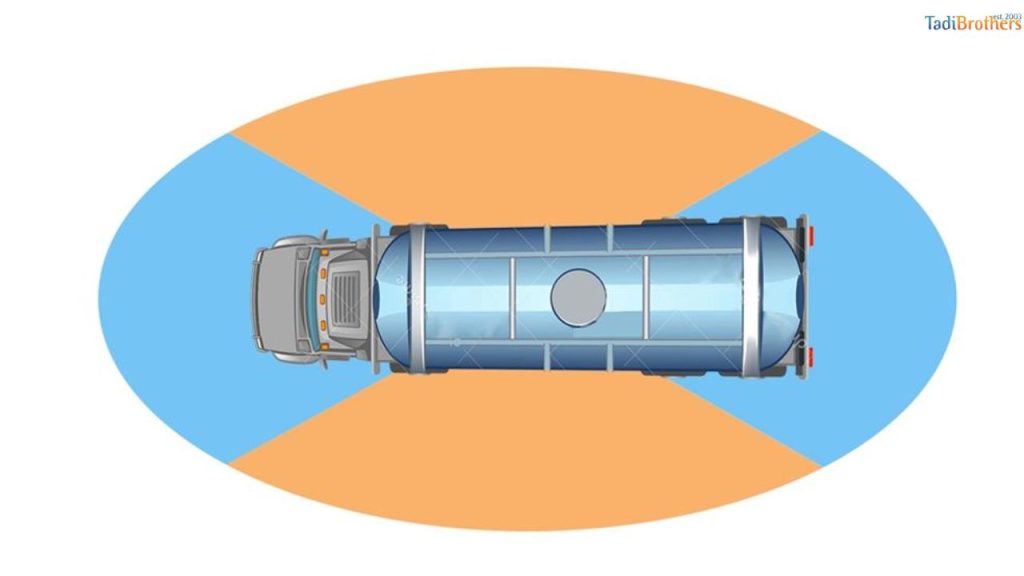Drive smarter and safer with clear vision from rearview mirror cameras. Cameras in rearview mirrors give semi-truck drivers a clear and wide field of view.
You can use the Semi Truck Camera System, which helps reduce blind spots that standard mirrors cannot cover fully on highways.
If you are looking for a commercial-level, bird’s-eye-view camera system designed for trucks and large commercial vehicles, you may want to check out TadiBrothers.

Types of Camera Systems
There are generally three main types of rearview mirror camera systems for semi-trucks:
- Side Mirror Cameras – Replace or supplement standard side mirrors, showing live feeds inside the cabin.
- Trailer-Mounted Cameras – Focus on the rear of the truck or trailer, helping with reversing, parking, and monitoring cargo.
- 360-Degree or Surround View Cameras – These semi-truck camera systems combine multiple camera angles into a single display, providing complete coverage around the truck.

Key Features of Rearview Mirror Cameras
- High-resolution video ensures clear images during day and night driving conditions.
- Glare reduction technology improves visibility under bright sunlight or oncoming headlights.
- Waterproof and vibration-resistant housing allows cameras to work in tough weather.
- Adjustable camera angles let drivers optimize views for different truck sizes.
- Alerts for blind spots warn drivers when vehicles enter unsafe zones nearby.
Safety Benefits for Semi-Truck Drivers
These cameras help in eliminating dangerous blind spots along truck sides and rear effectively. They help drivers who are making changes, merges, and backing maneuvers safely in traffic.
Cameras reduce collisions with other vehicles, cyclists, and pedestrians in high-traffic areas. Footage from cameras can also provide evidence in case of accidents or disputes.
Operational Efficiency Advantages
Cameras in the rearview mirrors of semi-trucks help with monitoring and precise trailer alignment during loading. Drivers experience less fatigue because they do not need to constantly adjust traditional mirrors.
Fleet managers can integrate cameras with telematics for real-time vehicle monitoring and compliance. Overall efficiency increases as drivers handle complex traffic situations more confidently.
Integration with Advanced Driver Assistance Systems
Many cameras now integrate with ADAS features like lane departure warnings and collision alerts. Real-time video input allows automatic hazard detection and safer lane keeping on highways. These systems enhance truck performance under urban traffic, delivery zones, and long-haul conditions.
Installation and Maintenance Tips
Proper mounting reduces vibration and ensures maximum coverage for all cameras. Regular cleaning of lenses and checking wiring connections prevents potential malfunctions. Weatherproof designs protect cameras from dust, rain, and extreme temperatures consistently.
Future Trends in Rearview Mirror Camera Technology
AI-powered vision will detect hazards automatically and provide predictive alerts to drivers. Low-light performance and wide-angle lenses are improving to cover more blind areas.
Integration with fleet management software allows remote monitoring of multiple trucks simultaneously. These advancements will continue raising safety, reliability, and operational standards on roads.
Conclusion
Cameras in the rearview mirrors of semi-trucks increase safety and operational efficiency. They eliminate blind spots, support precise maneuvers, and integrate with modern DVR systems. You can check the 360 Degree Semi Truck Camera System designed for trucks and large commercial vehicles.
Drivers gain confidence while reducing accident risk, and fleet managers improve monitoring. Advanced camera technology continues to improve truck safety and overall road reliability.
